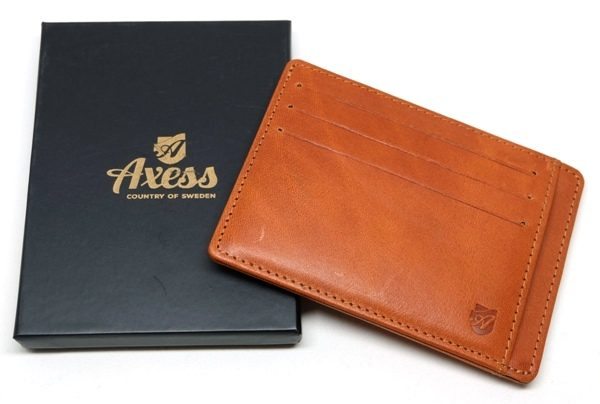
I am on a quest for a great leather wallet. I really enjoy using my Garzini Essenziale Finestra wallet, but are there others out there that I might like better? When the Gadgeteer was offered an Axess leather wallet to review, I volunteered to do so. I chose the Axess “Superior” Extended Vegetable Tanned Leather RFID-blocking V-shaped wallet because I need a lot of pockets for the number of cards I carry. How did it measure up to my Garzini wallet?
Design & Quality
The Axess “Superior” Extended RFID-blocking V-shaped wallet came in a very nice black box, wrapped in a black sheet of non-woven polypropylene material (or poly non-woven which is the same material used in reusable grocery bags).
The Axess “Superior” Extended wallet is a professional looking wallet that is handmade using full grain vegetable tanned Tuscany leather and measures 8 cm x 11 cm. The Tuscany leather is supposed to age well and develop a rich patina over time. The leather is smooth and has a wonderful smell and color. It is also very thin to minimize the amount of space the wallet takes up. Even though the wallet appears to be well made, because the leather is so thin, the wallet does not have a very robust feel.
This wallet has three credit card slots on the front with a side slot to the right of them. The thread used in this wallet is a “polyester/cotton corespun thread. The edges are hand cut.”
The back of the Extended version of the “Superior” wallet has another three credit card slots with a side slot as well, whereas, the non-extended version does not have these.
The wallet has two RFID-blocking pockets, one of which is the side slot on the front of the wallet as shown above on the left. The second of the RFID-blocking pockets is the side slot on the back of the wallet (above on the right).
RFID stands for radio frequency identification. According to creditcards.com,
RFID is actually the granddaddy of NFC and a generic term for technologies that use radio waves to identify people or objects. It also refers to the long-range communication technology that’s used in, for example, highway toll payment devices.
But NFC is a type of RFID that requires you to be within inches of the card reader, so fraudsters cannot skim your information easily. Still, as use of NFC-enabled mobile payments grows, contactless payment cards are being phased out.
Thus, if you are using contactless cards that allow you to wave your card over a card reader, then you may want an RFID-blocking wallet. Even though your information may be emitted from the chip on such a card, it usually requires that you be within inches away from the card reader and thus a thief would have to be that close to steal your information.
EMV (stands for Europay, Mastercard & Visa) is the current standard used in credit card chips today and requires direct contact with the card reader (the chip looks like that in the photo above). These cards require you to insert the chip end of your card fully into a card reader and they use tokenization which means that such a card “transmits a unique code for each transaction” thus making “it nearly impossible to counterfeit the card” according to creditcards.com. (Mobile wallets like Android Pay and Apple Pay also use tokenization). When using EMV chipped cards, you would not need to have an RFID-blocking wallet.
Anyway, continuing on with my review. In addition to the four slots on each side of the wallet, there is a V-shaped center pocket that holds paper money. This V-shaped opening allows the user easy access to the bills.
Each of the pockets (the paper money slot, the RFID slots, and the six credit card slots) is lined with a shiny nylon or polyester type of material. The lining of each of the pockets feels like it is covering a thin layer of cardboard to provide rigidity.
The wallet has a slim profile and is about 5 mm thick when empty. The uniformity of every aspect of this wallet makes it look like it is mass produced rather than handmade.
Use
In the front of the wallet, I inserted three plastic cards into the credit card slots and also inserted one plastic card into the RFID-blocking side slot. In the center slot, I had only one $20 bill.
On the back of the wallet, I inserted two plastic cards in the top and bottom credit card slots and three paper cards into the center slot. I also inserted two paper cards into the side slot.
With all of my necessities inserted, the wallet ended up measuring about 7/8″ thick.
Final Thoughts
The Axess “Superior” Extended Vegetable Tanned Leather RFID-blocking V-shaped wallet appears to be a well-made wallet and uses vegetable tanned Tuscany leather which develops a unique patina over time. New, it already has a wonderful color and smell. It is what I would describe as a professional looking businessman’s type of wallet. The wallet, being constructed so uniformly, has the appearance of being a mass produced wallet even though the website says Axess wallets are handmade. It also does not have a very robust feel to it so I cannot say how long it will last.
The V-shaped center opening is useful for easy access to your paper money, however, I found that the wallet expanded freely on the open side and was, therefore, less compact than I would like it to be. This, of course, is a matter of personal preference. Axess offers a handful of different styles of wallets and knowing what I know now about the opening, I may have been happier with the “Smooth” – Extended Vegetable Tanned Leather RFID-blocking compact wallet (caramel).
If you like professional looking leather wallets with the V-shaped style center pocket to hold your paper money, you are sure to enjoy using the Axess “Superior” wallet, however, I personally prefer my Garzini wallet.
Source: The sample used in this review was provided by Axess. Please visit their website for more information or to purchase one. You can also find their wallets on Amazon.

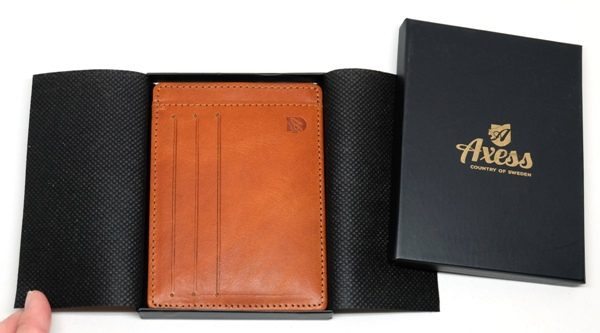
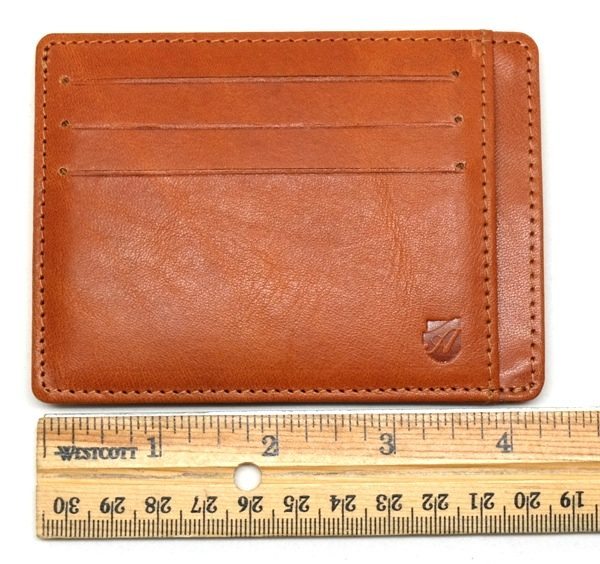
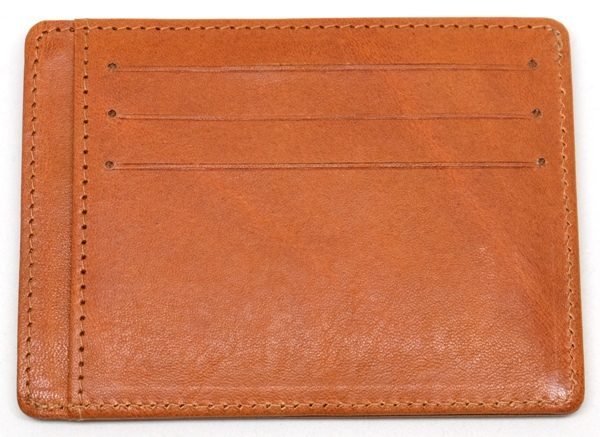
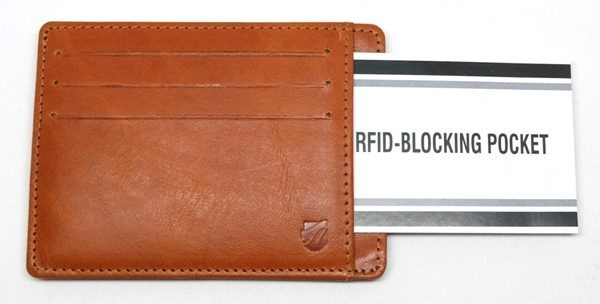

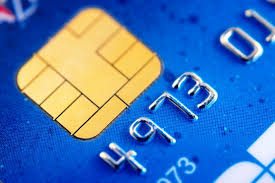
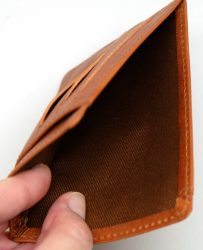
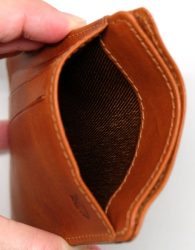
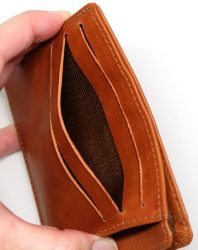

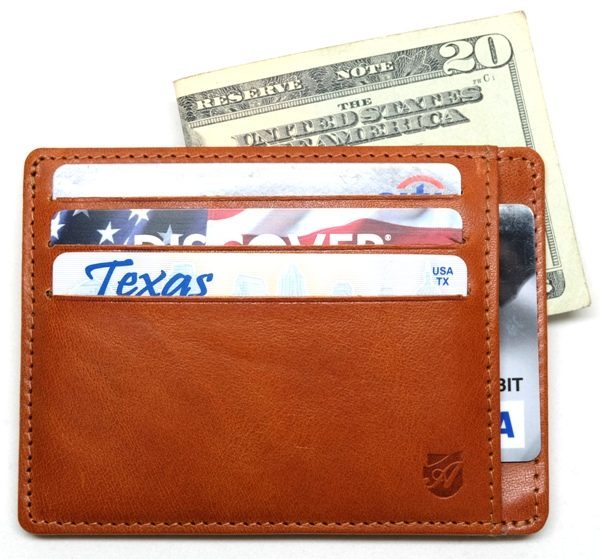
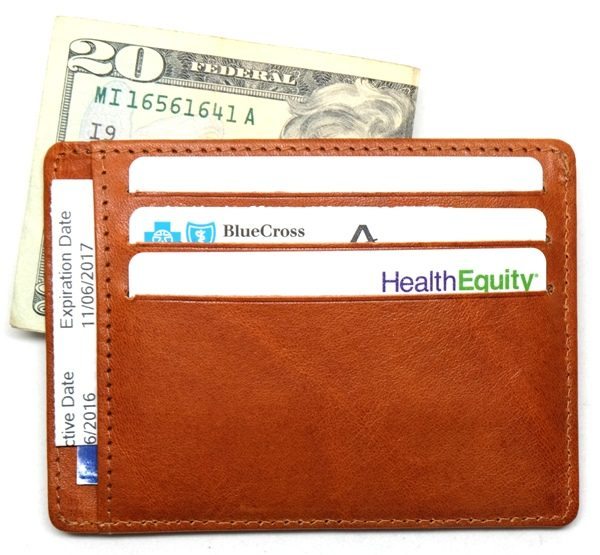
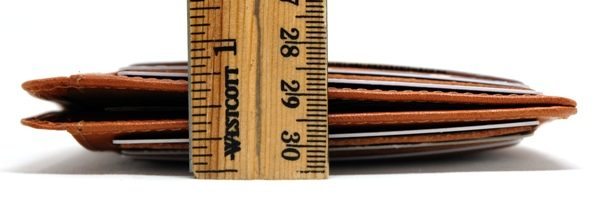


Gadgeteer Comment Policy - Please read before commenting
Hey, Kathleen, This was a great review. Axess wallet, which emerged from Kickstarter do look beautiful.
Just wanted to correct some facts regarding RFID in this post.
EMV does not use direct contact based transfer system. Rather it uses ISO1443A based 13.56MHz NFC wireless payment. The protocol is developed by EMVCo, a consortium of Europay, Mastercard & Visa to standardize the wireless payment system and replace the older magnetic tape cards. For more authentic information please refer to https://www.level2kernel.com/emv-guide.html or EMV official website https://www.emvco.com/specifications.aspx?id=21 . As of 2016, 80% of European cards are being powered by EMV contactless NFC cards.
EMV cards are still prone to RFID skimming if proper care is not in place like RFID blocking wallets. Although there hasn’t been any reported case of public skimming but researchers have proved that it’s quite possible with commercially available readers.
Ahmed Nabi Khan – Thank you very much for the information! I am not an expert on EMV chip credit cards. Your information is very important when deciding whether or not to purchase an RFID-blocking wallet.
Also, while digging into the information on emvco.com, I wonder if we aren’t both correct (that there are contact AND contactless EMV chip cards out there)? According to emvco.com,
“Today there are EMV Specifications based on contact chip, contactless chip, common payment application (CPA), card personalisation, and tokenisation.”
Which implies that there are both contact and contactless EMV chips. This was their link to the contact chip specifications: https://www.emvco.com/specifications.aspx?id=223
When doing the research into whether or not I had a contact or contactless EMV chip credit cards (while writing this review), it was not very straightforward. I have EMV chips on my credit cards but none of my card have the contactless symbol (the WAVE symbol – look up “contactless indicator” to see a sample of the symbol) on the front or back of the cards. Neither do my credit cards have any kind of special name that might indicate they are contactless (e.g. Visa payWave, MasterCard PayPass, American Express ExpressPay, Discover Network Zip).
When doing further research into contactless EMV chip credit cards which was driven by your comment, according to smartcardalliance.org, “EMV is a payments technology. NFC is a communications technology that enables contactless EMV.” and the organization also summarized how contactless EMV cards work, “How does contactless payment work? A consumer presents a contactless MasterCard, Visa or American Express payment card or keychain device to within a couple of inches of the POS [point of service] terminal. The terminal automatically reads payment account information stored on the smart chip embedded in the card and securely processes the payment transaction. Inside the card or keychain device a contactless smart chip is wired to an antenna. Contactless payment terminals emit high frequency radio waves which are used to both provide power to the contactless payment device and communicate information between the device and the reader. When the contactless payment device is brought close to the reader (typically less than 4 inches away), the contactless smart chip is powered on. Once the chip is powered on, a wireless communication protocol is established between the contactless device and the reader. The card and the terminal exchange security information, then conduct a secure payment transaction, all in less than one-third of a second.”
From this information, it would appear that I do NOT have a contactless EMV chipped credit card and thus do not need an RFID-blocking wallet.
There’s an interesting article written on the potential reasons for high adoption of contactless payment in Europe, Canada, and Australia and the low adoption of such payment systems in the U.S. at http://www.pymnts.com/nfc/2016/uk-lessons-for-us-mobile-payments-adoption/
So, it would seem that a large percentage of Europe, Canada, Australia, etc. is using the contactless EMV chip cards, while people like me in the U.S. seem to have a contact type of EMV chip on our credit cards instead.
There’s so much information out there on EMV chip cards and this information is no where near exhausitive. If any of our readers wish to know more information, please continue to read more on site like emvco.com and smartcardalliance.org.
Thank you so much for your information, Ahmed! I think it will help all of our readers to clarify which kinds of cards they have and what kind of wallet they may want to purchase.
Hey, Kathleen, I didn’t know about EMV contact cards so thanks for the additional information. To summarize the discussion, if your card has the RFID symbol (the wave signals), you need a RFID protection else you can go on with without one 🙂
Also I just read about the roadmap about American card issuers adaptation of EMV contactless cards and seems like we will see a lot of contactless cards in our pocket soon so wallets like Axess are very handy for such times.
Thanks again for the wonderful review.